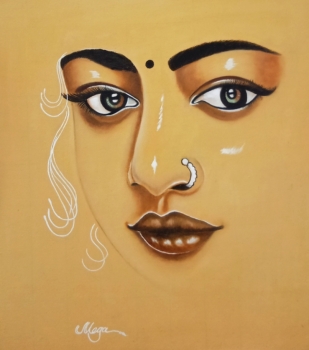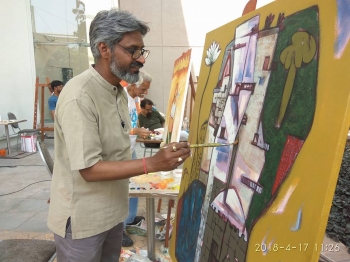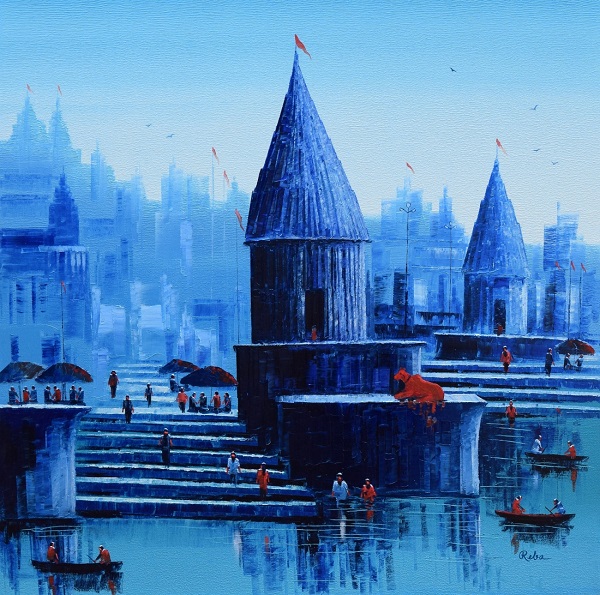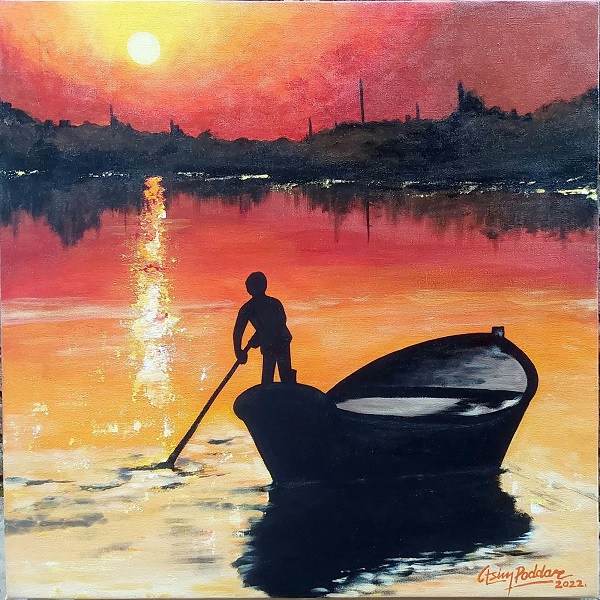
Are you a nature lover? Do you appreciate the beauty of tall snow-capped mountains, stunning sunrises, or clear skies on a sunny day? If yes, then you cannot miss out on incorporating a landscape painting in your interior decor. Landscape paintings not only introduce a touch of nature into your living space but also make you feel closer to it. The calming vibe of landscape paintings, paired with the elegant fusion of hues revamp your overall living experience.
Landscape paintings have a magical way of capturing the essence of nature, translating it onto canvas to create stunning masterpieces that resonate with admirers. Once you incorporate a landscape painting in your interior, it will surely enhance the elegance while providing a natural touch. In this exploration of landscape art, we delve into the beauty, history, and impact of these creations, celebrating the artists who skillfully blend the natural world with their artistic visions.
The Essence of Landscape Paintings
Landscape paintings take us on a journey and showcase how beautiful nature is. Artists make the paintings look calm and amazing by using various brushstrokes and colors. There are many types of landscapes that can be painted on canvas, such as peaceful green meadows or tall mountains standing by the clear sky. Additionally, landscape paintings can also offer a modern feel by showcasing modern cities with tall skyscrapers. These paintings help people feel connected to nature by using colors, light, and textures. When you look at these paintings, it's like going outdoors without leaving your home. They make nature look pretty and make you feel good. In simple words, landscape paintings are like magical windows that let you see and feel the wonderful world of nature.
A Historical Journey
The roots of landscape art trace back centuries, with early examples found in Chinese and European traditions. Paintings crafted by Chinese artists often showcased beautiful landscapes, emphasizing harmony and balance. In the West, landscape art gained recognition during the Renaissance, evolving through different movements like the Romantic era, where artists captured the sublime beauty of nature. Slowly and gradually, Landscape art started becoming mainstream, and more and more audiences started recognizing and appreciating it.
Techniques and Styles
Landscape paintings incorporate a combination of various styles and techniques that add to their beauty. While realism captures scenes realistically, impressionism focuses on light and color, offering a more abstract view of the landscape. On the other hand, romanticism emphasizes emotions, often featuring dramatic landscapes. Furthermore, abstract landscapes use a combination of different shapes and colors to evoke feelings rather than realistic details. Traditional Chinese landscape art often balances simplicity and symbolism. Modern styles might include surrealism, where landscapes blend reality and imagination. Techniques like shading, perspective, and brushstroke variation bring these scenes to life. Whether it's a serene depiction or a bold interpretation, landscape art lets artists express the world's diverse beauty in many captivating ways.
Modern Interpretations
Many artists continue to experiment with new styles and continue to push the boundaries of landscape art. This allows them to explore new variations, styles, and techniques that ultimately produce new masterpieces. Digital technologies enable some artists to create immersive experiences, while others experiment with abstract forms to convey the evolving relationship between humanity and nature. These modern interpretations add a dynamic layer to the rich tapestry of landscape art.
The Impact of Landscape Art
Having landscape paintings in your living space makes you feel closer to nature. In the daily hustle, we often forget to admire the beauty of nature. Beyond their aesthetic appeal and elegance, landscape paintings have a profound impact on individuals and society. They inspire a connection to nature, evoke introspection, and serve as reminders of the importance of preserving our environment. Museums and galleries around the world showcase these masterpieces, providing spaces for reflection and appreciation.
Collecting Landscape Art
For art enthusiasts looking to bring the beauty of landscapes into their homes, collecting landscape art can be a fulfilling endeavor. Whether acquiring pieces from established artists or supporting emerging talents, collecting landscape art allows individuals to curate a personal gallery that reflects their connection to the natural world.
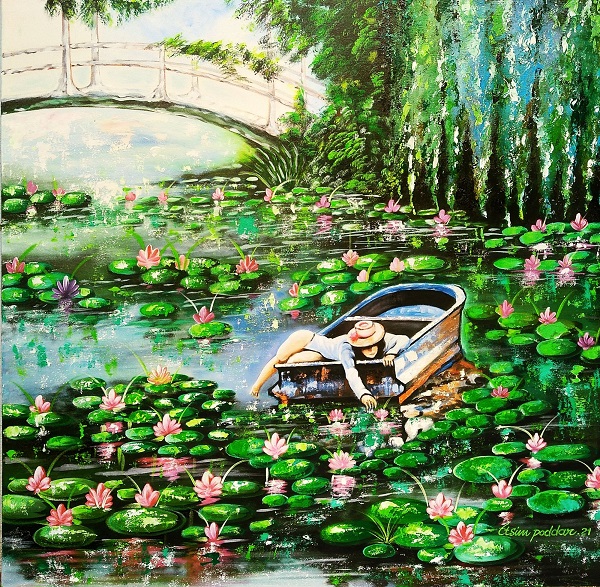
Types of Landscape Paintings
Even though each and every artist has his or her own flair for painting, a landscape piece of artwork is normally divided into three categories: representational, impressionistic, and abstract. Let's get into the details and understand each of the types.
Representational Landscape Art
If you've ever looked at a landscape painting and thought it looked a lot like a photo, you were probably looking at a phenomenal work of representational landscape art. Not all representational art is a copy of reality, but this form of landscape art does aim to look like the real thing with realistic colors and figures. The artist looks at the colors, shadows, perspective, composition, and other details of a landscape and aims to reproduce these on the canvas or other surface on which they are working.
Impressionistic Landscape Art
Impressionistic landscape art takes a step back from representational landscape art. Instead of representing a scene in its true form, impressionistic art aims to evoke emotions and feelings, specifically the emotions and feelings of the artist when she looks upon a scene. You know how the world seems more beautiful when you're in a good mood or vice versa? That's the inner world reflected onto the outer world that impressionistic art aims to capture. Impressionistic landscape artwork banks extremely on the artist or photographer's visualization and knack to create a spectacular image of nature, through his artistic bent.
Abstract Landscape Art
In direct contrast to representational art, abstract art doesn't attempt to visually represent reality or any real element. An abstract landscape can surely be inspired by real-world objects and landscapes, but it doesn't portray reality. Shapes, colors, forms, marks, and other effects may not look much like a landscape at all, or it might focus on one aspect of a landscape, like a tree branch or a wave in the ocean, and exaggerate its importance within the overall composition and focus of the work of art. There's a minor and subtle difference between abstract landscape art and abstracted landscape art. Abstract art isn't representational at all, but abstract art is part of the journey to abstraction. In a work of abstracted landscape art, you might have a scene where you can make out certain elements, like a bridge, a seascape, or clouds, but the overall effect is still not representational.

Wrapping Up
In conclusion, landscape paintings bring the beauty of nature into our homes, creating a connection to beautiful nature. From representational art mimicking reality to impressionistic pieces capturing emotions, and abstract works exploring shapes and forms, each style offers a unique perspective on the natural world. Throughout history, landscape art evolved, inspiring introspection and emphasizing the importance of preserving our environment. Modern interpretations continue to push boundaries, adding dynamic layers to this rich tapestry. Whether collecting established masterpieces or supporting emerging talents, incorporating landscape art into our living spaces not only enhances elegance but also serves as a daily reminder of nature's wonders.
FAQs:
What type of painting is landscape?
Landscape painting is the depiction of natural scenery in art. Landscape paintings may capture mountains, valleys, bodies of water, fields, forests, and coasts and may or may not include man-made structures as well as people. These paintings are known to showcase nature in an array of colors, styles, and techniques
Who is a landscape artist?
Landscape artists are those who portray the outdoors in their works, such as scenes of rolling hills or meadows, fields, mountains, lakes, the seaside, and beyond. As shown in landscape paintings by famous artists, elements of the natural world take precedence over people as the focus in this genre.
Is landscape a type of art?
In today's artistic era, landscape continues to be a major theme in art with many artists using documentary techniques such as video, photography, and classification processes to explore the ways we relate to the places we live in and to record the impact we have on the land and our environment.
What is an interesting fact about landscape art?
The term “landscape” actually comes from the Dutch word “landschap”, which originally meant “region, piece of land”, but acquired an artistic connotation: “a painting depicting a landscape on land”. In the Netherlands, this term was one of the first to be used as landscape has become a popular subject for painting.














